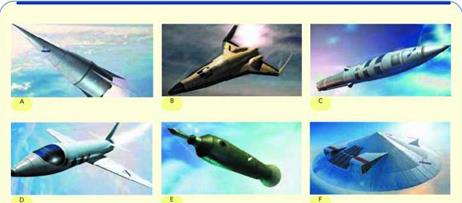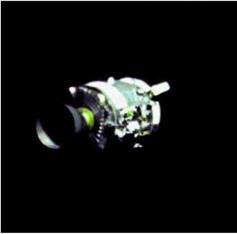The Ansari X Prize Blasts Off
|
P |
rizes and competitions during aviation’s infancy sparked what is one of the largest industries today. With that in mind, Peter Diamandis, the founder of the X Prize Foundation, sought to stimulate a similar excitement and interest. But this time the sights were set a little bit higher, 100 kilometers (62.1 miles or 328,000 feet) high to be exact. Here the atmosphere is all but nonexistent, and aerodynamics really don’t matter much anymore.
The Ansari X Prize would draw teams competing from Argentina, Canada, England, Israel, Romania, Russia, and the United States. Figure 2.1 and figure 2.3 show some of the many different approaches the teams had in their attempts to snatch the Ansari X Prize.
Yet there was much to overcome. The biggest obstacle was public perception. How could any one of these teams—not governments—accomplish something straight out of the pages of science fiction books?
“When I talked to people during dinner conversation about building a spaceship,” said Anousheh Ansari, the title sponsor of the Ansari X Prize, “they completely thought I was a nutcase. They were surprised. Of course now, nobody thinks we’re crazy. But back in 2002, you talked about spaceships and building spaceships and no one believed you.” Where there is a will, there is a way to space. But it would not be an easy one. Beyond the idealistic beauty and mystical draw, space is relentlessly unforgiving. There is no pulling off to the shoulder and calling roadside assistance. There is no limping back to the airfield on just one of four remaining engines. Even the most

|
|||||
|
|
|
|||
|
|||||


![]()
careful planning cannot completely remove the cold grip of space, as in figure 2.2, where the damaged Apollo 13 service module is shown after the crew narrowly escaped catastrophe during an aborted Moon landing.
Is the price worth it? Each and every day people face risk in their homes and once they step outside. It is familiar risk, though. But it doesn’t mean this risk goes away just because people become accustomed to it.
“You cannot have great breakthroughs without risk,” insisted Diamandis. “By definition, something that is a true breakthrough, the day before it’s a breakthrough, it’s a crazy idea. If it is not a crazy idea, then it is not a breakthrough. It’s a small, incremental improvement. Computing with silicon instead of vacuum tubes was a crazy idea. So, how do you embrace allowing people to try their crazy ideas?
“How do you allow people to take those risks, people who want to take the risks and not regulate against it? I think space is a very risky business still, and that’s okay. I had publicly said that during the course of the X Prize, people may lose there lives. But they are doing it for something they deeply believe in.”










